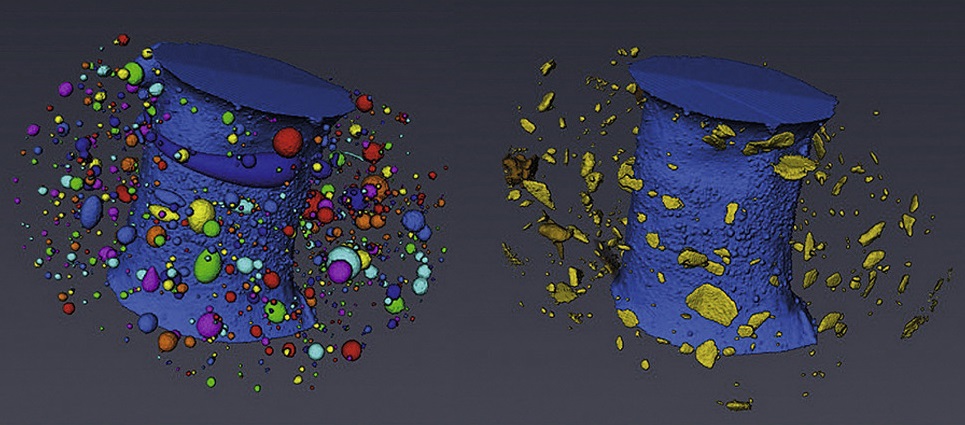Thermo Fisher Scientific › Electron Microscopy › Electron Microscopes › 3D Visualization, Analysis and EM Software › Use Case Gallery

The usefulness of desktop Micro-CT scanners for the study of archaeological artefacts is demonstrated in a non-destructive study of manufacturing methods of Roman and Early Medieval monochrome and polychrome glass beads. Differences in glass colours show up in these scans as differences in attenuation. The presence and distribution of bubbles and various inclusions (metal, opacifier) are also well visible. Shaft shapes and patterns of bubbles inside the glass make it possible in most cases to distinguish between drawn, wound and constructed (millefiori) beads and to study shaping methods. Shafts shapes also reveal shapes and dimensions of the mandrels used in bad manufacture. Decoration and construction methods are be visualized and studied in virtual cross-sections and semi-3D rendered images of selected glass colours. Visible degradation processes – including fissuring, leaching (especially of opaque yellow glasses) and dissolution processes – are highlighted. The micro-CT scans demonstrate how quality of raw glass, base design and workmanship ion bead manufacture have improved with time. Moreover, it shows how these scans may serve as basis to discuss the organization of workshops where simple or more complex objects were made from non-metallic raw materials, and the availability and distribution of different qualities of raw materials for these workshops.
For Research Use Only. Not for use in diagnostic procedures.